How hundreds of thousands of antennas are combined into one telescope
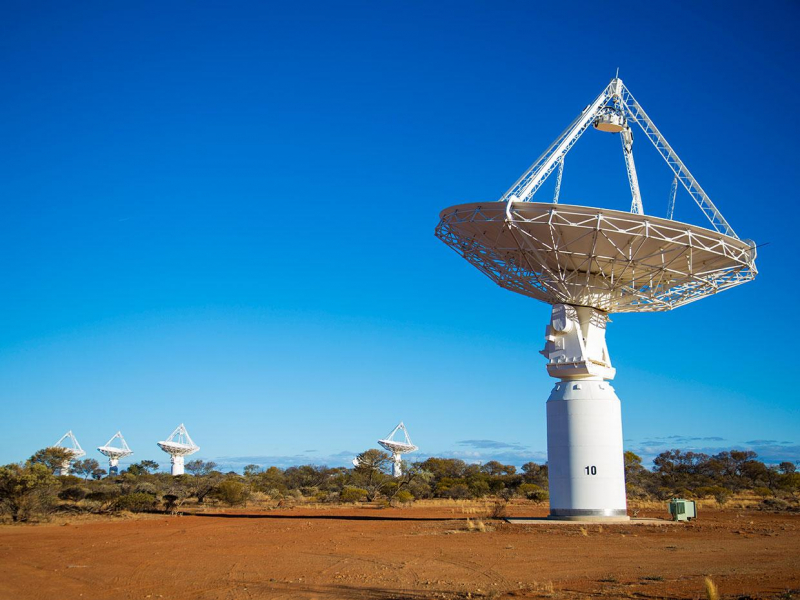
The huge antenna in the photo above is the Murchison Radio Astronomy Observatory in Western Australia. It consists of 36 complexes with mirror antennas operating in the 1.4 GHz band. The main mirror of each antenna reaches 12 meters in diameter, and all the antennas together are only part of the Pathfinder radio telescope. Dozens of such antennas are working smoothly to see the farthest horizons of the universe, but soon hundreds of thousands of antennas are planning to merge into one system. Who cares please under the cat.
Pathfinder radio telescopes are deployed all over the planet and many of them plan to unite by 2030 into the Square Kilometer Array (SKA) system, which has a total reception area of more than one square kilometer. It will be a complex of two thousand antenna systems in Africa and half a million radio complexes from Western Australia.
The project, which Australia, Canada, China, India, Italy, the Netherlands, New Zealand, South Africa, Sweden and the United Kingdom are working on at the same time, will unravel the many secrets of the universe. He will be able to measure a huge number of pulsars, star fragments and other cosmic bodies, emitting electromagnetic waves along their magnetic poles. Observing similar objects near black holes, new physical laws can be discovered and, possibly, a unified theory of quantum mechanics and gravity will be developed.
Work on the construction of the SKA will take place in several stages with the construction of the SKA1 system and other smaller components. SKA-1 itself will consist of SKA1-mid in southern Africa, and SKA1-low in Australia.
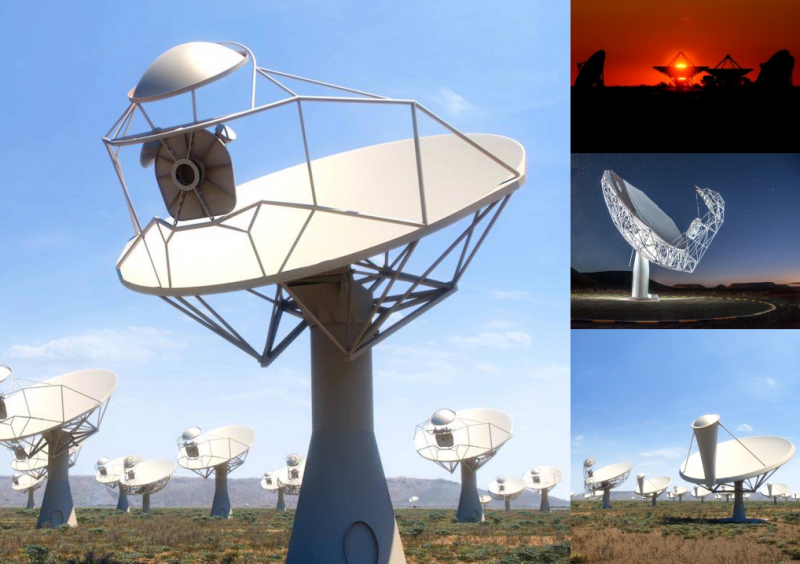
The SKA-mid depicted in the photo will consist of 197 antennas with a diameter of up to 15 meters each
SKA1-low is designed to collect low-frequency radio waves that appeared in space several billion years ago. To receive such waves, small turnstile antennas will be used. They receive signals in a wide range of frequencies, considering television and FM. SKA1-low antennas operate in the range from 50 to 350 MHz, their appearance is shown below:
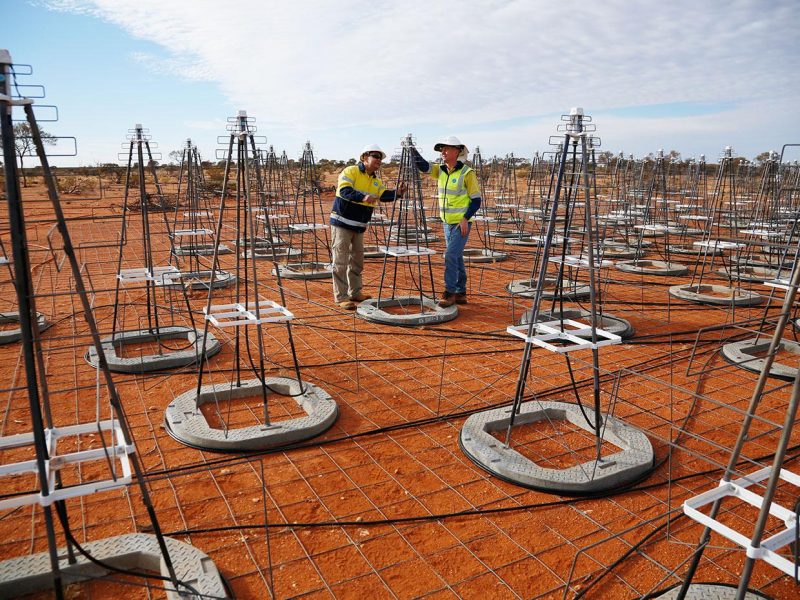
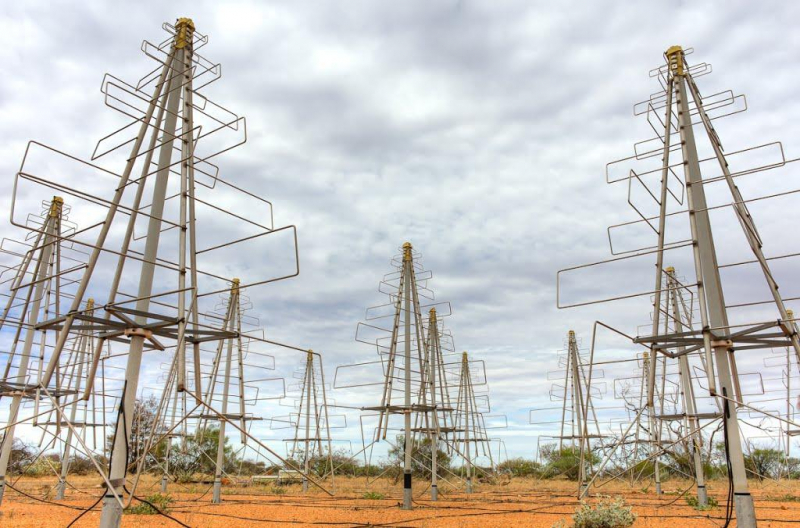
The project management plans to install more than 131 thousand of such antennas by 2024. All of them will be divided into clusters of 256 pieces each, and their signals will be combined and transmitted over one fiber-optic communication line.
The principle of operation of antennas in a single array is similar to the operation of an optical telescope. The only difference is that the radio telescope focuses not optical radiation, but radio waves. And the received wavelength, the larger the diameter of the mirror antenna, such as the FAST radio telescope in China, which will also become part of the SKA in the future.
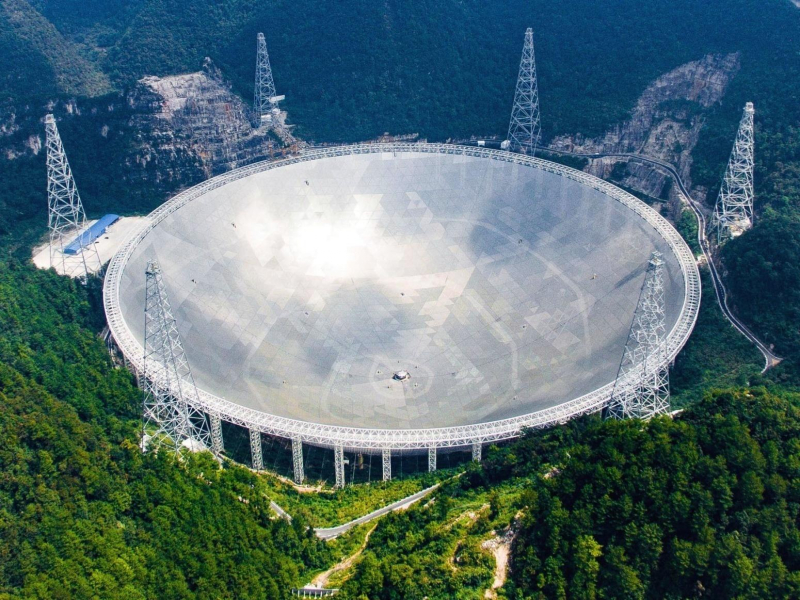
The problem is that infinitely increasing the size of the mirror will not work, and to build powerful buildings of the FAST type will not work everywhere. That is why it is easier to use many smaller distributed antennas. An example is the Murchison Widefield Array (MWA) antenna for radio astronomy. MWA antennas operate in the range from 80 to 300 MHz:
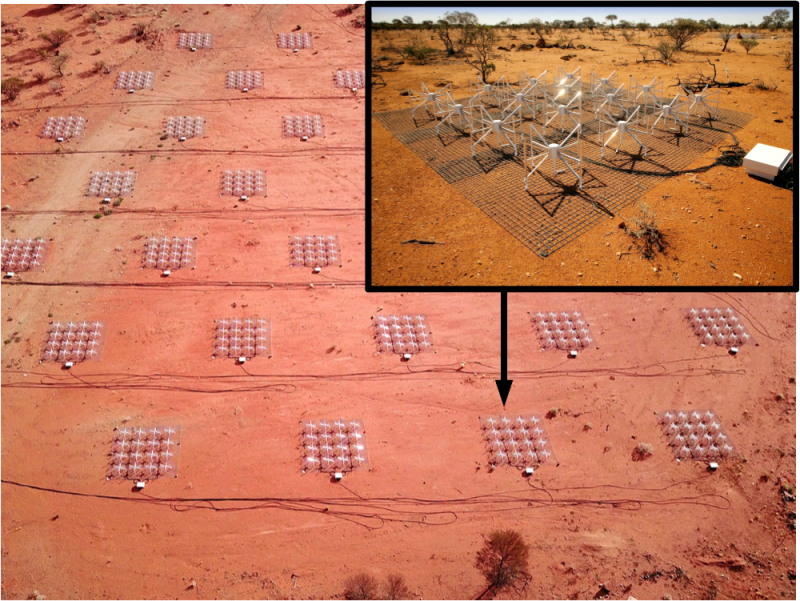
These antennas are also part of SKA1-low in Australia and are able to look into the dark period of the early universe, which existed 13 million years ago at the time when stars were born and other objects began to heat the universe filled with hydrogen atoms. It is noteworthy that, until now, radio waves emitted by these neutral hydrogen atoms can be detected. Waves were emitted with a wavelength of 21 cm, but by the time they reached the Earth, billions of years of space expansion had passed, stretching them another few meters.
The image below shows a section with MWA antennas. Each section contains 16 antennas, which are interconnected into a single network using fiber:
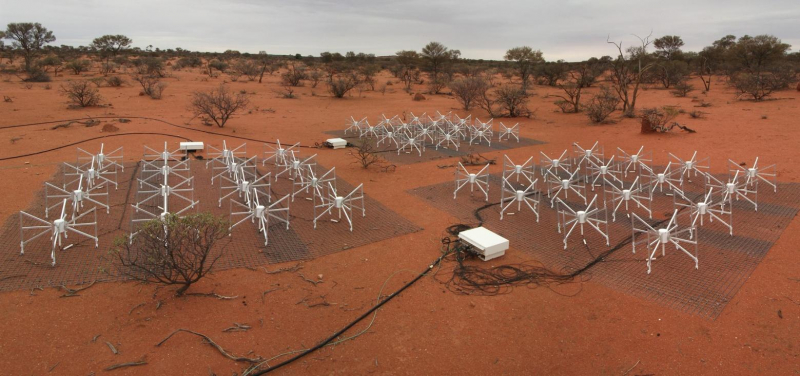
MWA antennas receive radio waves from different directions simultaneously. Incoming signals are amplified at the center of each antenna with a pair of low-noise amplifiers, and then sent to the nearest beamformer. There, waveguides of various lengths give a certain delay to the antenna signals. With the right choice of this delay, the beamformers “tilt” the beam pattern of the array so that the radio waves coming from a certain part of the sky reach the antenna at the same time as if they were received by one large antenna.
Such antennas are divided into two groups, each of which sends signals to one receiver. It distributes the signals between different frequency channels. After the receiver in optics sends a signal to the observatory. There, the data are correlated by multiplying the signals and their integration over time. This approach allows you to create a single strong signal, as if it was received by one large radio telescope.
The visibility range of such a virtual radio telescope is also proportional to its size. In the case of a telescope consisting of multiple antennas, its maximum resolution will be determined by the distance between the receiving parts. And the bigger it is, the more accurate the resolution.
Thanks to this property, astronomers create virtual telescopes spanning continents. Thanks to such a large object, it is even possible to discern black holes in the center of the Milky Way. However, size is not the main thing in obtaining accurate information about the object studied in the universe. The quality of the resolution is also affected by the total number of antennas and their location relative to each other.
Data obtained using MWA is sent hundreds of kilometers to the nearest data center with a supercomputer. MWA can send more than 25 terabytes of data per day and in the coming years, with the release of SKA1-low, this speed will be even higher. And 131,000 antennas in the SKA1-low radio telescope, working in one common array, will collect more than a terabyte of data every day.
And this is how the problem with the power supply of radio telescopes is solved. In the Murchison Radio Astronomy Observatory, the power supply of the antenna complexes is provided by solar panels with a capacity of 1.6 megawatts:

Until recently, the antennae of the observatory worked on diesel generators, and now, in addition to solar panels, it also has a huge number of lithium-ion battery units that can be stored 2.6 megawatt hours. Some parts of the antenna array will soon receive their own solar panels.
In such ambitious projects, the issue of financing is always quite acute. At the moment, the SKA1 construction budget in South Africa and Australia is about 675 million euros. This is the amount set by the 10 project member countries: Australia, Canada, China, India, Italy, the Netherlands, New Zealand, South Africa, Sweden and the United Kingdom. But this funding does not cover the entire cost of SKA1, which astronomers are hoping for. Therefore, the observatory is trying to attract more countries to the partnership, which could increase funding.
Radio telescopes allow you to monitor distant space objects: pulsars, quasars, etc. So, for example, using the FAST radio telescope, we managed to detect a radio pulsar in 2016:

